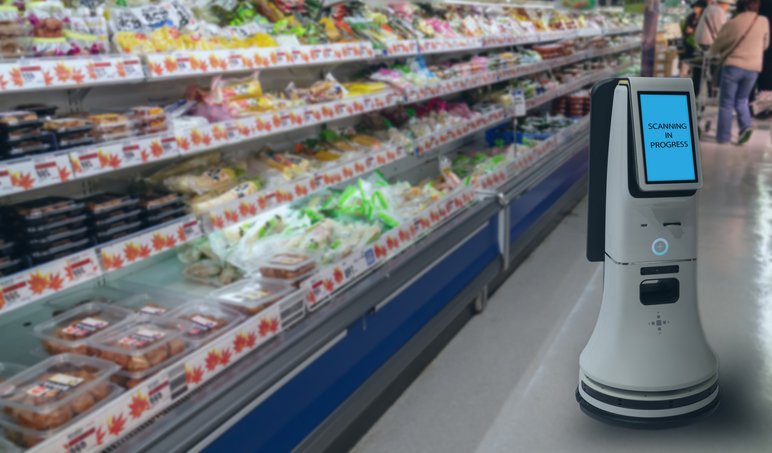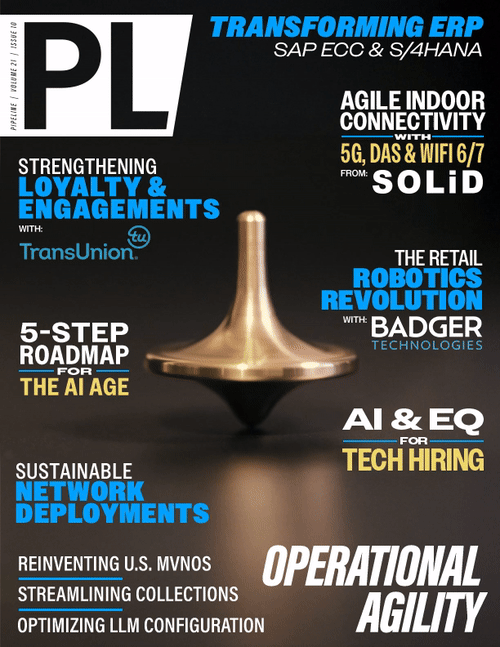By: Len Wierzbicki, Head of Strategy - Badger Technologies

In the rapidly evolving landscape of retail operations, a silent revolution is reshaping the way retailers manage their stores, supply chains, and customer experiences. Mobile autonomous robots
(MARs)—once seen as futuristic novelties—have firmly established themselves as essential technologies driving measurable competitive advantage. What was once aspirational is now
operational.
Early adopters of MARs are reporting double-digit improvements in operational efficiency, inventory accuracy, and customer satisfaction. Meanwhile, retailers still operating with manual workflows
and outdated tools are beginning to feel the pressure of a widening performance gap. Inaction is no longer a neutral choice—it’s a strategic liability.
The Widening Competitive Divide
Studies show that retailers who implemented autonomous mobile robots in the past 24 months have seen 20-25 per cent lower operational costs and 15-20 per cent higher inventory accuracy than their
non-automated competitors.
The reason is simple: MARs enhance operations by offloading routine, repetitive, and data-intensive tasks that drain human productivity. These include inventory scanning, price validation, hazard
detection, and planogram compliance. Robots operate continuously, even overnight, collecting and processing millions of data points with consistency and precision.
Retailers relying solely on human labor and traditional handheld devices (like RF guns) simply can’t match this scale. While those teams check shelf tags and backroom stock one aisle at a time,
MARs glide through store environments autonomously, feeding insights directly into enterprise systems. The result? Faster decisions, higher accuracy, and significantly more agile
operations.
This performance delta is compounding as robots collect data and learn with every shift. Machine learning algorithms enhance pattern recognition, route efficiency, and decision-making over time.
Every day without automation is a day lost in an increasingly automated race.
“We delayed implementing autonomous robots for just 18 months, and that decision cost us an estimated $3.2 million in preventable losses,” admits the operations director at a mid-sized grocery
chain. “By the time we deployed, competitors had already optimized through multiple cycles of iteration and learning.”
Operational Agility: A New Retail Mandate
In today’s climate of economic uncertainty, supply chain volatility, and labor shortages, operational agility has become a non-negotiable requirement. MARs are proving to be critical enablers of
this agility, allowing retailers to adapt in real time to shifting demands and unexpected disruptions.
A major grocery retailer that deployed a fleet of MARs reported being able to adjust its inventory plan within hours during a recent regional supply chain disruption, redirecting stock based on
real-time shelf data. Prior to automation, those decisions took days and were often based on outdated or incomplete information.
Agility is not just about reacting; it’s about anticipating. With continuous store-wide scanning, autonomous robots build predictive models that help retailers prepare for seasonality shifts,
promotional surges, and even localized consumer behavior trends.
As retail consultant Martin Jelinek puts it:
“MARs turn operational agility from a buzzword into a measurable outcome. They give retailers the ability to pivot faster and with more confidence.”
MARs Free Associates to do Meaningful Work
While manufacturers often highlight technical specifications—such as battery life, LIDAR systems, and onboard processing—the real value of MARs lies in the operational transformation they
enable.
1. Immediate Labor Redeployment
Retailers consistently report that automation frees staff from repetitive tasks. Instead of spending valuable time scanning shelves,
associates are helping customers, cleaning the store, and merchandising. One national chain saw a 30% boost in customer satisfaction scores after employees were redeployed to
customer-facing roles.
2. Data-Driven Awareness
Autonomous robots detect pricing errors, missing labels, misstocked items, and slip and fall hazards (like spills, excessive moisture, and loose
impediments) with pinpoint precision. These issues often go unnoticed by overburdened human teams but are flagged in real time by robots.




















